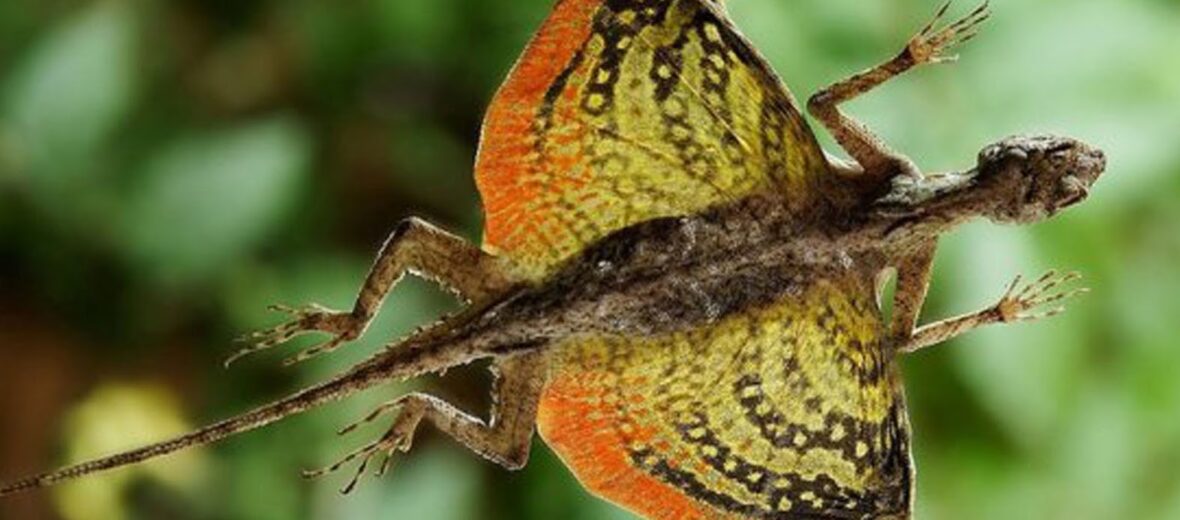
With 31 known species of flying dragon lizards ranging from Australia, Philippines, Borneo, India, Malaysia, to Indonesia these lizards are well established. Flying lizards live in tropical rainforests. These forest areas are under the threat of deforestation due to human encroachment. While they aren’t able to actually fly, they can glide great distances!
First the Stats…
Scientific name: Draco volans
Weight: Up to 4 ounces
Length: Up to 8.4 inches
Lifespan: Up to 8 years
Now on to the Facts!
1.) These lizards eat termites and ants.
2.) They are totally arboreal (spend their entire lives in trees) reptiles.
3.) Males are fierce when defending their territory against competitor males but gladly share their space with females.
4.) After mating, the female leaves the tree to lay her eggs on the ground. She digs a hole in the ground & lays between 1 – 5 eggs. She will stay and protect her eggs for up to 24 hours. After that period, eggs will be covered with dirt and left to their own devices.
5.) The ribs of flying dragon lizards are elongated and able to both extend and retract. They are covered with folds of skin. While extended, the ribs combined with unfolded skin creates wings that they use to glide from tree to tree.
But wait, there’s more on flying dragon lizards!
6.) Flying lizards also have a flap of skin, called a dewlap, below their necks. This is used as a stabilizer during their gliding; like the tail of an airplane.
7.) These critters also have a long, slender tail which they use to aid in steering when they’re gliding through the forest.
Did you know…?
Flying lizards have the ability to glide up to 190 feet, but typically glide at distances of 30 feet or so!
8.) Some cultures steer clear from and do not hunt these lizards as they fear they are poisonous or venomous. This isn’t true.
9.) Snakes, large birds, and monitor lizards all prey on these lizards.
10.) These lizards are often kept as exotic pets.
Now a Short Flying Dragon Lizard Video!
Also, check out the Critter Science YouTube channel. Videos added frequently!
Want to suggest a critter for me to write about? Let me know here.



